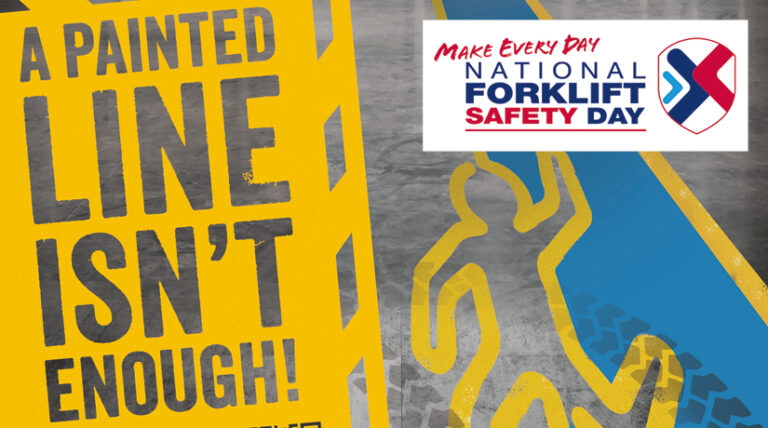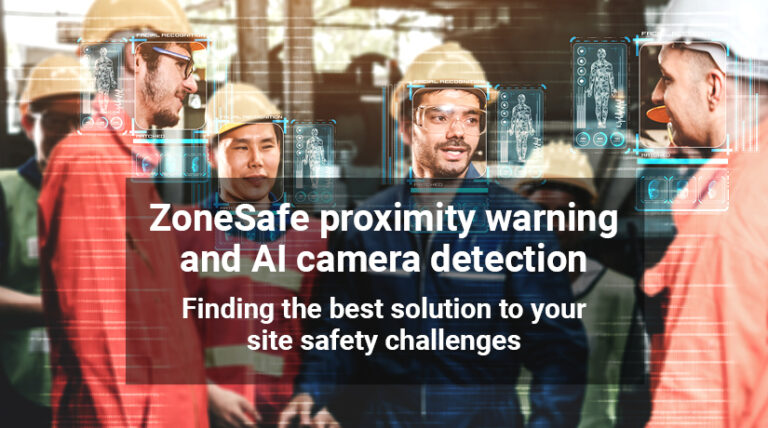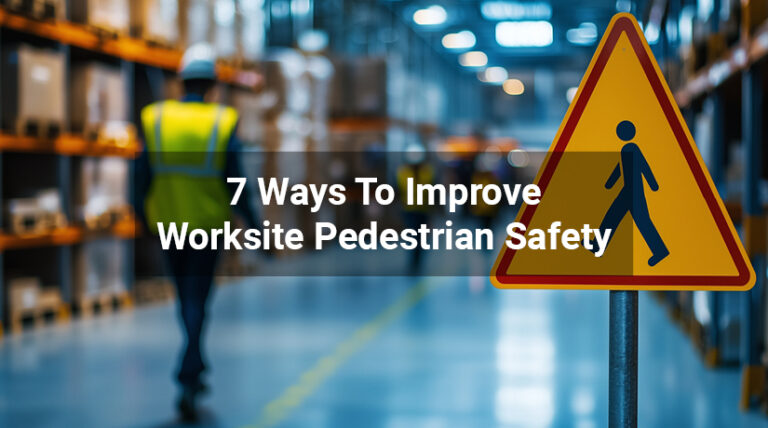Segregation of pedestrians and moving machinery is extremely important – in any industry.
In industrial workplaces, vehicles and pedestrians share the same space and have to work in extreme close proximity to each other. Think of a warehouse, or loading bay. Health and safety rules and regulations have to be in place. If these precautions aren’t taken, there can be devastating results. All too often, heavy-duty vehicles such as forklifts, loaders and jib cranes can easily collide with pedestrians and can cause serious injuries.
These can also come at a price. Here are some case studies when segregation wasn’t in place – and they faced the consequences.
Fined for safety breaches
In 2018, a major construction company was found guilty of failing safety precaution after one of their workers was critically injured when he was run over by a dumper truck. The man sustained serious injuries to his right arm, facial fractures, fractured ribs, a fractured pelvis, leg fractures and foot injuries and spent more than six months in a brain injury rehabilitation unit. The company was fined £100,000 and ordered to pay full costs of £100,000.
Why such a hefty fine?
After their standard checks, the HSE established that there was no segregated area for people on foot, and the principal contractor had not produced (or put in place) a suitable traffic management plan to ensure that there was adequate separation of vehicles and pedestrians, where the accident occurred.
Case notes from the HSE (Health and Safety Executive):
A 28 year old employee had his foot crushed by a reversing telescopic loader. There was no segregation between vehicles and pedestrians in the narrow loading area. The telehandler was reversed with its boom raised, blocking visibility and obscuring the wing mirror.
The driver did not see the employee and reversed over his foot. The employee suffered fractured ankle and foot bones, torn ligaments and permanently reduced mobility.
Action
It was found that the company failed to perform a suitable risk assessment, despite advice given at another site and did not arrange segregation, or provide other safety measures (such as additional lighting or banksmen).
The company was prosecuted for failing to properly assess the risks and for not separating people from moving vehicles (segregation). They were fined a total of £4000.
Advice given
The HSE stated that clear legal duties were in place for over six years, and even though this is a risk that accounts for a third of the fatalities in the agricultural industry, a man still suffered debilitating injuries to his leg and foot. The message is clear to all – pedestrians and moving vehicles do not mix safely. Segregation and clearly marked separate areas for both would have avoided any injury and prosecution.
Segregation in recycling
A national recycling firm in Lancashire was fined £200,000 plus nearly £12,000 after an employee was struck by a 7.5 tonne telehandler. The accident happened as a result of the company failing to provide adequate segregation between pedestrians and moving vehicles.
At the waste transfer station in Lancashire, as an employee walked across an outside an outside plastics hand sorting area he passed behind a stationary telehandler. The telehandler began to reverse and struck the worker, who was knocked to the ground and then run over by the rear wheel of the vehicle. The injuries that he sustained led him to be hospitalised for two months.
Advice from the HSE
The Health and Safety Executive (HSE) prosecuting, told the court that the company had identified the risks, but failed to put in place suitable controls to stop people being hit by vehicles (and no segregation.
An HSE inspector stated, after the hearing: “Employers need to look carefully at their workplaces regularly to make sure that pedestrian routes clearly marked and physically separated from vehicle routes wherever possible. The employee could have easily been killed and still has severe mobility problems as a result of the accident. He is unlikely to be able to work in the near future.”
So how can we take steps to segregate?
The HSE states that:
- By law, pedestrians or vehicles must be able to use a traffic route without causing danger to the health or safety of people working near it.
- Roadways and footpaths should be separate whenever possible.
- You need to consider protection for people who work near vehicle routes.
- By law, traffic routes must also keep vehicles routes far enough away from doors or gates that pedestrians use, or from pedestrian routes that lead on to them, so the safety of pedestrians is not threatened.
Ways of vehicle segregation
Whenever it is reasonable to do so, an employer should provide separate routes or pavements for pedestrians to keep them away from vehicles. The most effective way to do this is to separate pedestrian-to-vehicle activity, by making routes entirely separate. Where possible, pedestrian traffic routes should look and feel like the paths that people would naturally follow – this encourages people to stick to them.
Clear markings
Clear markings can set apart vehicle and pedestrians routes; these can be with either tape on the floor or specially-made paint that is used on warehouse floors, airport runways and industrial sites. Companies such as Warehouse Floor Marking provide such paint markings, for ‘walkways that ensure the safety of your employees, to pallet lanes that maximise the use of space in your warehouse. Floor markings are an effective – and relatively cheap way for segregation of pedestrians and vehicles.
Barriers
Barriers are useful when forklifts and pedestrians work together in the same space. They can be used to mark out where the pedestrian walkways should be, they can be used in conjunction with gates, or in the case of A-Safe, they can be produced in such durable material that should it be needed, it can hold back the force of a forklift, protecting the pedestrian who is working in close proximity.
What happens when you cannot segregate?
There are of course, times when you cannot segregate pedestrians and vehicles. There are sites when there are often workers have to cross the path of heavy-duty vehicles travelling along at speed. Crossing points and walkways are a great solution, but accidental collision can still occur – due to blind corners, busy or noisy environments and also staff unfamiliarity with the site layout.
ZoneSafe has the solution.
ZoneSafe’s Walkway and Crossing Alert is a Proximity Detection System, using Radio Frequency Identification (RFID) that helps to reduce accidental collisions through audible and visual warnings, ensuring that your pedestrian worker is aware of any oncoming vehicles.
System Overview
The standard ZoneSafe Vehicle to Person Alert System is fitted to the vehicle, with a detection antenna. The ZoneSafe Vehicle Detection Unit is positioned near the pedestrian crossing, walkway or blind corner – wherever there is chance of collisions. This is also connected to warning lights located on the crossing or walkway.
The ZoneSafe Vehicle Detection Unit detects an approaching vehicle. Once detected, it activates warning lights located at the crossing point. This warns the pedestrian of any incoming vehicles – and indicates whether it is safe to cross.
This application can ALSO be set up with a barrier system. The Vehicle Detection Unit can ensure that the barrier or gate automatically closes when vehicles approach a crossing or walkway. The barrier will only open when the walkway is clear of vehicles, reducing the chances of an accident.
To find out more about ZoneSafe’s suite of products, visit www.zonesafe.net.




